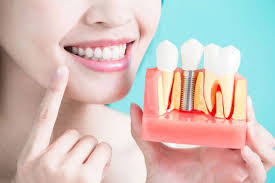Orthodontic Treatment Types: A Comprehensive Guide by Cosmodent Dental Clinic
Orthodontic treatments are essential for correcting misaligned teeth and jaws, which can significantly improve both aesthetics and functionality. At Cosmodent Dental Clinic, we offer a range of orthodontic solutions tailored to meet the unique needs of each patient. Understanding the different types of orthodontic treatments available can help you make an informed decision about your dental care.
1. Traditional Metal Braces
What Are They?
Traditional metal braces are the most common and widely recognized type of orthodontic treatment. They consist of metal brackets attached to each tooth, connected by a thin wire that is periodically tightened to gradually shift the teeth into the desired position.
Who Are They For?
Metal braces are suitable for patients of all ages and are particularly effective for treating complex cases of misalignment, overcrowding, and bite issues.
Pros:
- Highly effective for complex cases
- Durable and resistant to wear
- Often the most affordable option
Cons:
- Visible on the teeth, which may affect aesthetics
- Can cause discomfort initially
- Requires regular adjustments
2. Ceramic Braces
What Are They?
Ceramic braces function similarly to metal braces but use tooth-colored or clear brackets, making them less noticeable. The wires can also be tooth-colored to further reduce visibility.
Who Are They For?
Ceramic braces are ideal for patients who need the effectiveness of traditional braces but prefer a less conspicuous option.
Pros:
- Less visible than metal braces
- Effective for a wide range of orthodontic issues
- Stain-resistant materials
Cons:
- Slightly more expensive than metal braces
- Brackets can be larger and more brittle
- Requires more meticulous oral hygiene to avoid discoloration
3. Lingual Braces
What Are They?
Lingual braces are similar to traditional metal braces but are attached to the back of the teeth, making them virtually invisible from the front.
Who Are They For?
Lingual braces are suitable for patients who require comprehensive orthodontic treatment but wish to keep their braces hidden from view.
Pros:
- Completely hidden behind the teeth
- Custom-made to fit each patient’s dental structure
- Effective for complex orthodontic cases
Cons:
- Can be more expensive than traditional braces
- May cause discomfort to the tongue and affect speech initially
- More challenging to clean and maintain
4. Clear Aligners (Invisalign)
What Are They?
Clear aligners, such as Invisalign, are a modern alternative to braces. They consist of a series of custom-made, clear plastic trays that fit snugly over the teeth and gradually move them into the desired position.
Who Are They For?
Clear aligners are ideal for patients with mild to moderate orthodontic issues who prefer a nearly invisible treatment option.
Pros:
- Virtually invisible
- Removable for eating, drinking, and cleaning
- Comfortable with no metal components
Cons:
- May not be suitable for severe cases
- Requires strict compliance to wear for 20-22 hours a day
- Can be more expensive than traditional braces
5. Self-Ligating Braces
What Are They?
Self-ligating braces are similar to traditional braces but use a specialized clip instead of elastic bands to hold the wire in place. This reduces friction and allows the teeth to move more freely.
Who Are They For?
Self-ligating braces are suitable for patients seeking a more comfortable and potentially faster treatment option than traditional braces.
Pros:
- Shorter treatment time in some cases
- Fewer adjustments needed
- Easier to clean
Cons:
- Still visible like traditional braces
- May be more expensive than traditional braces
- Not suitable for all cases
6. Retainers
What Are They?
Retainers are custom-made devices that are worn after braces or aligners to maintain the new position of the teeth. They can be removable or fixed, depending on the patient’s needs.
Who Are They For?
Retainers are for anyone who has completed orthodontic treatment and wants to preserve their results.
Pros:
- Prevents teeth from shifting back to their original position
- Can be worn only at night (depending on the type)
- Customizable for comfort and aesthetics
Cons:
- Requires ongoing wear to maintain results
- Removable retainers can be lost or damaged
- Fixed retainers may require special cleaning techniques
Conclusion
Choosing the right orthodontic treatment depends on various factors, including the severity of the dental issue, personal preferences, and budget. At Cosmodent Dental Clinic, our experienced orthodontists are committed to helping you achieve a healthy, beautiful smile through personalized care and state-of-the--art treatments. Schedule a consultation with us today to explore the best orthodontic options for you.



Comments
Post a Comment